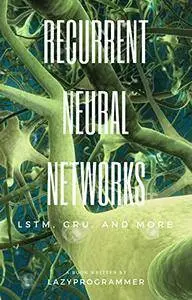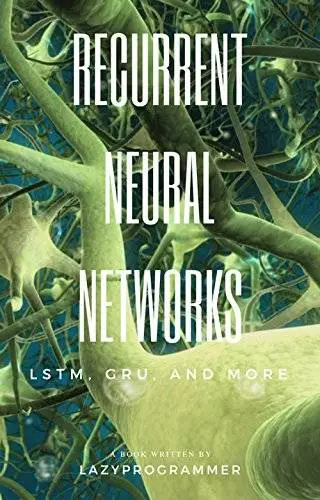Deep Learning: Recurrent Neural Networks in Python: LSTM, GRU, and more RNN machine learning architectures in Python and Theano (Machine Learning in Python) by LazyProgrammer
English | 8 Aug 2016 | ASIN: B01K31SQQA | 86 Pages | AZW3/MOBI/EPUB/PDF (conv) | 1.44 MB
English | 8 Aug 2016 | ASIN: B01K31SQQA | 86 Pages | AZW3/MOBI/EPUB/PDF (conv) | 1.44 MB
Like Markov models, Recurrent Neural Networks are all about learning sequences - but whereas Markov Models are limited by the Markov assumption, Recurrent Neural Networks are not - and as a result, they are more expressive, and more powerful than anything we’ve seen on tasks that we haven’t made progress on in decades.
In the first section of the course we are going to add the concept of time to our neural networks.
I’ll introduce you to the Simple Recurrent Unit, also known as the Elman unit.
We are going to revisit the XOR problem, but we’re going to extend it so that it becomes the parity problem - you’ll see that regular feedforward neural networks will have trouble solving this problem but recurrent networks will work because the key is to treat the input as a sequence.
In the next section of the book, we are going to revisit one of the most popular applications of recurrent neural networks - language modeling.
One popular application of neural networks for language is word vectors or word embeddings. The most common technique for this is called Word2Vec, but I’ll show you how recurrent neural networks can also be used for creating word vectors.
In the section after, we’ll look at the very popular LSTM, or long short-term memory unit, and the more modern and efficient GRU, or gated recurrent unit, which has been proven to yield comparable performance.
We’ll apply these to some more practical problems, such as learning a language model from Wikipedia data and visualizing the word embeddings we get as a result.
All of the materials required for this course can be downloaded and installed for FREE. We will do most of our work in Numpy, Matplotlib, and Theano. I am always available to answer your questions and help you along your data science journey.
See you in class!
“Hold up… what’s deep learning and all this other crazy stuff you’re talking about?”



